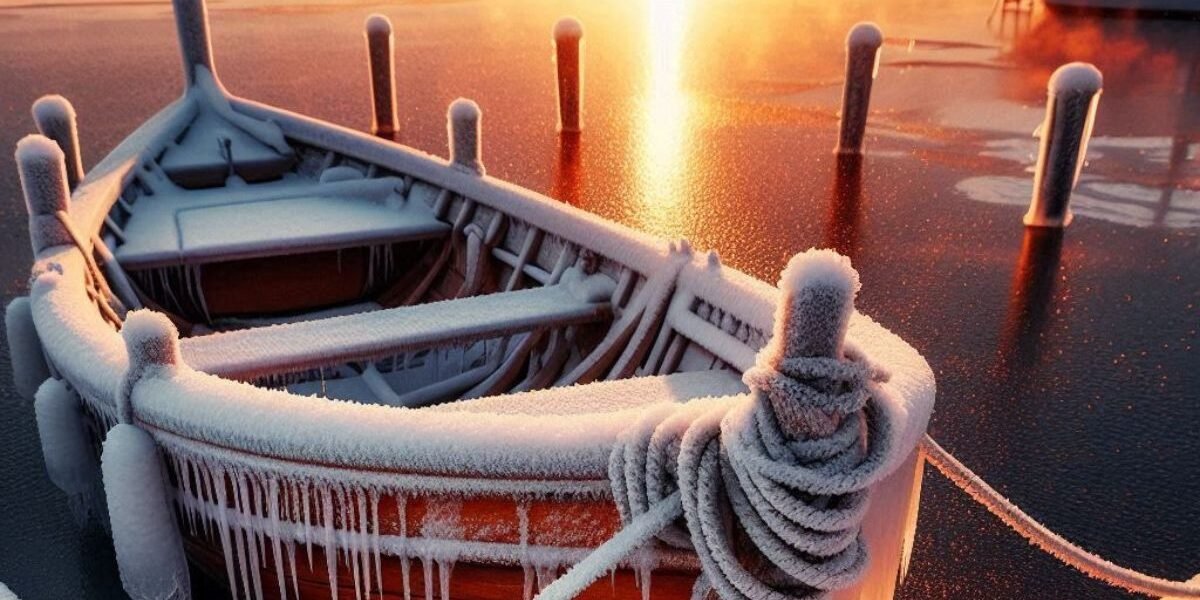Winterizing Your Inboard Boat: Essential Steps and Tips
Winterizing your inboard boat motor is an essential step for any boat owner to protect their investment during the colder months. To properly winterize a boat,
To warm it up, change the engine and transmission oil, and then add fuel stabilizer to prevent any spring fuel issues; flush the engine with fresh water and drain out all residual water.
Then fill the engine block, carburetor, and exhaust with propylene glycol antifreeze after rinsing the engine with fresh water; spray fogging oil into the carburetor and take out the spark plugs so you can spray oil inside the engine.
Lastly, disconnect hose from raw water intake on boat and fill with non-toxic antifreeze; cover boat for winter storage.
Not difficult but very important in protecting your boat from freezing temperatures is winterizing an inboard motor. Start by removing outboard motor from boat and draining water out of engine block.
Let it run to get warm then pour a mixture of water & antifreeze into engine block/cooling system. Next remove spark plugs & spray fogging oil into cylinders to prevent corrosion.
Don’t forget to put fuel stabilizer in gas tank & run for a few minutes to circulate through whole fuel system. Finally cover boat & store indoors or under shelter for winter months.
When next spring comes around every boater wants their boats ready for use right away so taking these steps will ensure that this happens! Before winterizing your engine be sure to clean everything off really good like dirt salt buildup etc otherwise there could easily be some kind of damage done because of rust build up especially during those long cold months when we don’t think about using our boats at all!
Once everything is cleaned out start by taking all necessary precautions such as draining carbs exhaust manifolds cylinder heads ETC where applicable (most engines).
After this stage has been completed go ahead and fill these areas up with anti freeze making sure not skip anything or else cracks could form causing expensive repairs down line somewhere along lines backfires occur which would cost lots $$ fix !!
Also don’t forget about removing plugs spraying fogging oil inside engine protect against rusting out cold weather conditions.
If you follow these steps carefully there shouldn’t be any problems later on but just in case still add fuel stabilizer to gas run through for few mins also cover boat up store somewhere safe like building or something
Why is Winterizing Your Inboard Boat Important?

Winterizing your inboard boat is important to ensure that your engine remains in good condition during the colder months
. Winterizing your boat is necessary to safeguard the inboard engine against freezing temperatures which may cause damage. Normally, this involves displacing any water found in the engine by running it with non-toxic antifreeze like propylene glycol. Ensure you have antifreeze on hand if you are aware that your boat takes longer to warm up.
After completing the process of winterization, let the engine run for some minutes so as to heat it up and circulate anti-freeze throughout all parts of a system before turning off an engine and draining any excess water from both outboard drive system and also an engine.
Remember also to drain all water from a garden hosepipe used for flushing an engine then cover a boat using a suitable cover.
from the elements while it is in boat storage. By winterizing your inboard boat, you are making sure that your boat will be ready to go when the winter boat season is over.
Preventing Freezing Damage with Antifreeze
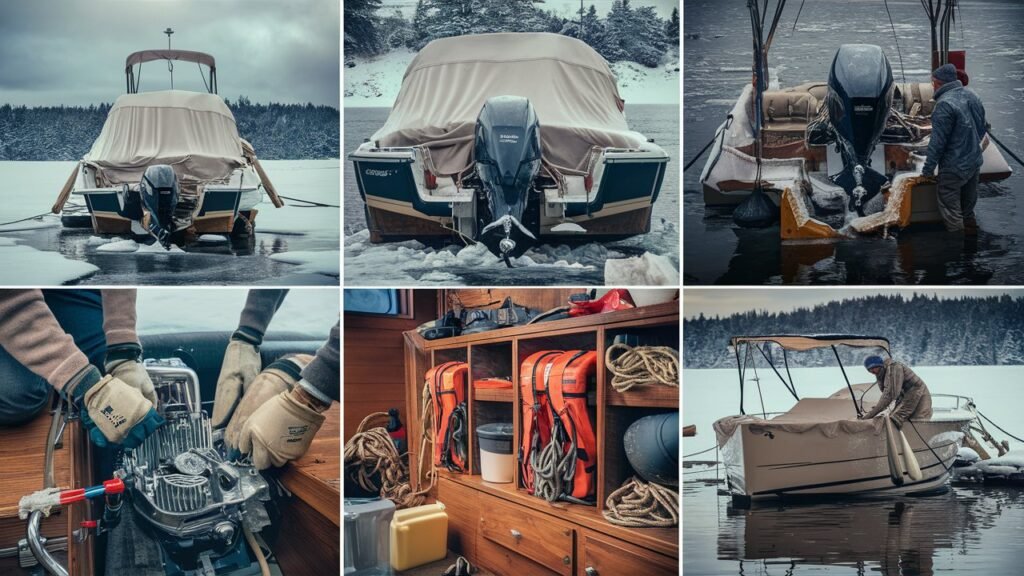
Before keeping a boat in storage for the winter, it is common for many ship owners to know this. To avoid freezing damage, one important step of winterizing an inboard or outboard engine is using antifreeze.
The initial thing you should do is ignite the engine and let it run until it gets to the operating temperature. Then turn off the engine and drain all water left in the boat before pumping antifreeze into it.
This guarantees that anti-freeze will flow through the cooling system thereby preventing any part of an engine block or manifold from being spoilt by frost.
Once you have put some antifreezes inside your motor, restart the power plant so as to evenly distribute them throughout its interior parts too.
After that has been accomplished other remaining steps on how to prepare boats for winter can be followed or taken up successively without skipping any step whatsoever as mentioned above till everything else is done towards protecting against freezing temperatures both boats with their trailers included.
How to Winterize Your Inboard Boat?
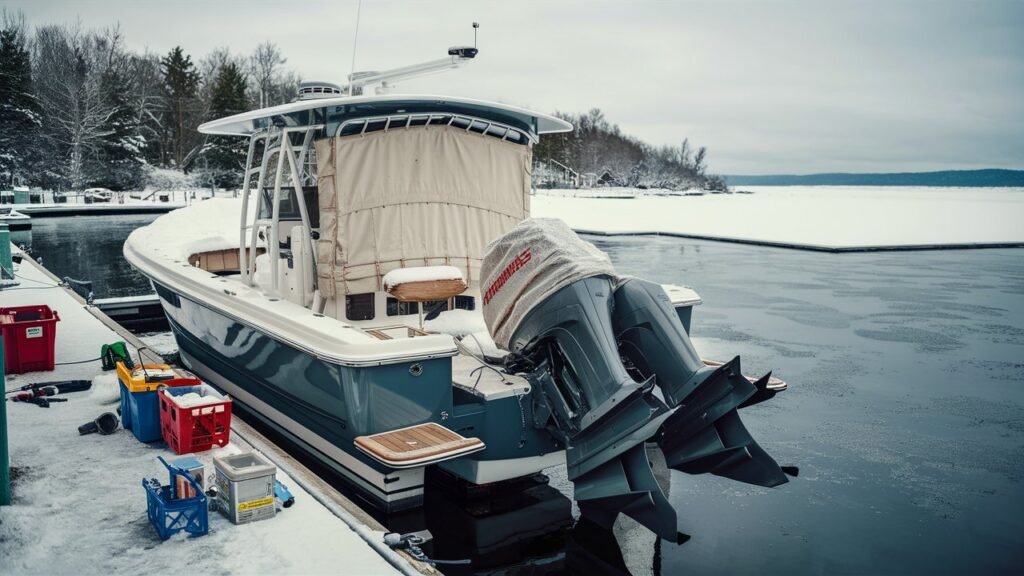
Shielding your inboard boat from the freezing winter weather is important. First, empty all water from the engine of an inboard boat as a step towards preparing it for winter.
This ensures that any water remaining does not freeze which can cause harm to your engine.
It is also vital to pour anti-freeze into the motor so that no additional liquids freeze and expand within it.
Another thing you should do when winterizing a vessel is stabilize fuel; otherwise, it may break down and create problems during spring start up again.
Finally, before putting away for storage throughout these cold months make sure everything works well on your ship including its systems and the engines run smoothly too.
By taking necessary steps towards protecting boats against winter damage one can be certain that their boat will still look good even after storing it away for long time periods over the winter season.
Adding Antifreeze to the Cooling System
Winterizing a boat is mandatory for any boat owner who wants to safeguard their vessel when it gets cold.
Among the most vital steps of winterization is putting antifreeze into the cooling system which ensures that the water within does not freeze and cause damage to other parts including the engine.
If wrong marine engine antifreeze is used, it may harm them hence should be avoided at all costs. Before one adds the antifreeze, he or she must flush out and drain his or her coolant well from his/her boat by following these simple instructions;
Firstly you need to remove all old coolants then secondly perform a thorough cleaning process on the system. When everything has been prepared accordingly, follow these steps carefully;
Check what amount of mixture will give you maximum protection during winter months according to manufacturers’ guidelines.
Fogging the Engine with Fogging Oil
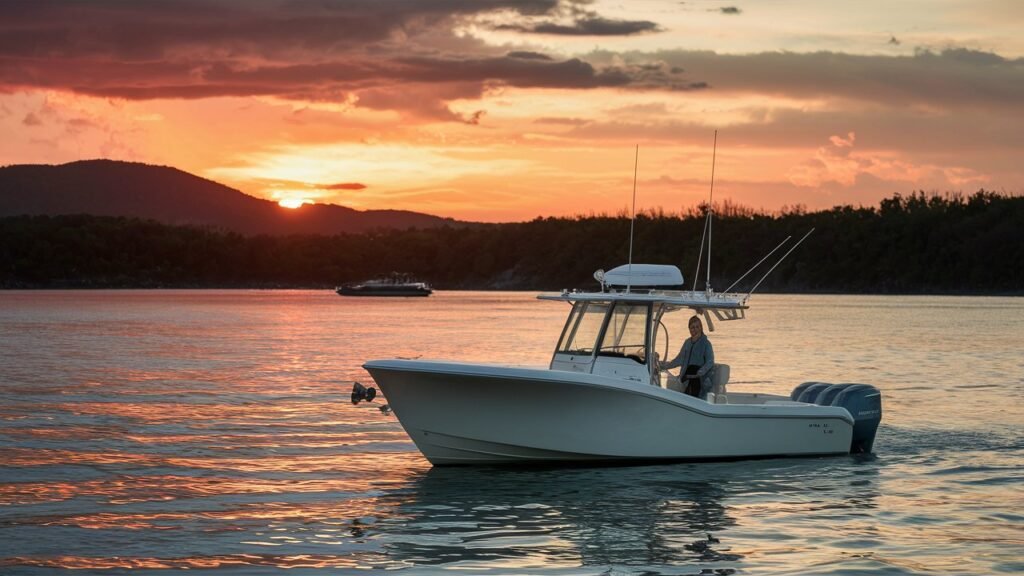
Fogging the Engine with Fogging Oil
Preserving small engines during periods of storage is an important part of maintenance and can be done by fogging them with fogging oil. When machines are left unused for long, moisture may accumulate in their engines causing possible rusting and impairment.
Fogging oil is a unique type of lubricant that should be sprayed into the engine to form a shield against dampness. This procedure also helps in lubricating inner parts of the machine as well as preventing corrosion and rust.
It is necessary to go through manufacturer’s instructions or any other recommendations concerning the particular equipment being worked on before undertaking this process.
Ensure that the engine has cooled down; this will make it easy to remove spark plugs which give way for entry into combustion chambers. Then inject fogging oil into spark plug holes while at the same time pulling starter cords so that oils gets distributed all over engines.
The next step after fogging an engine involves replacing spark plugs then running such engines for few minutes in order to ensure even distribution of oils within them.
By fogging your engine using fogging oil before storing it away, you get to safeguard small motors thus they will serve you well when need arises.
What Supplies Do You Need for Winterizing?
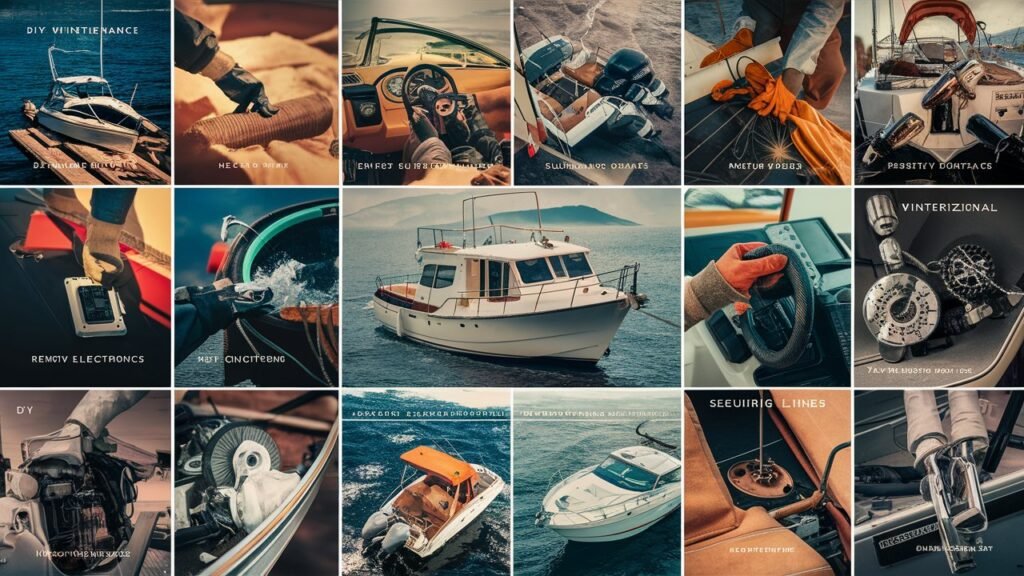
When preparing for the winter season, it is necessary to collect all the requisite things to shield your home from terrible weather conditions.
Among those things are sealants meant for winterization; these can fill up cracks or holes around doors and windows so as to prevent cold drafts from getting in.
Those who want heat kept inside and out should also have insulating material like spray foam insulation or weather stripping installed; such substances would help a great deal in achieving this goal too.
Besides that another useful material during this time would be pipe lagging which stops them from freezing solid when temperatures drop below zero degrees Celsius.
Another item that comes in handy at such temperatures is heating tape because it keeps pipes warm preventing them from freezing thus bursting due to expansion caused by ice formation inside their walls altogether.
Lastly but not least among essentials needed for winterizing your home is salt or any other ice melting agent used on walkways and driveways where people usually step while coming into or going out of the house so as not only to prevent slipping accidents but also making them safe places during icy conditions which may prevail over some months each year without any break at all.
When is the Best Time to Winterize Your Inboard Boat?
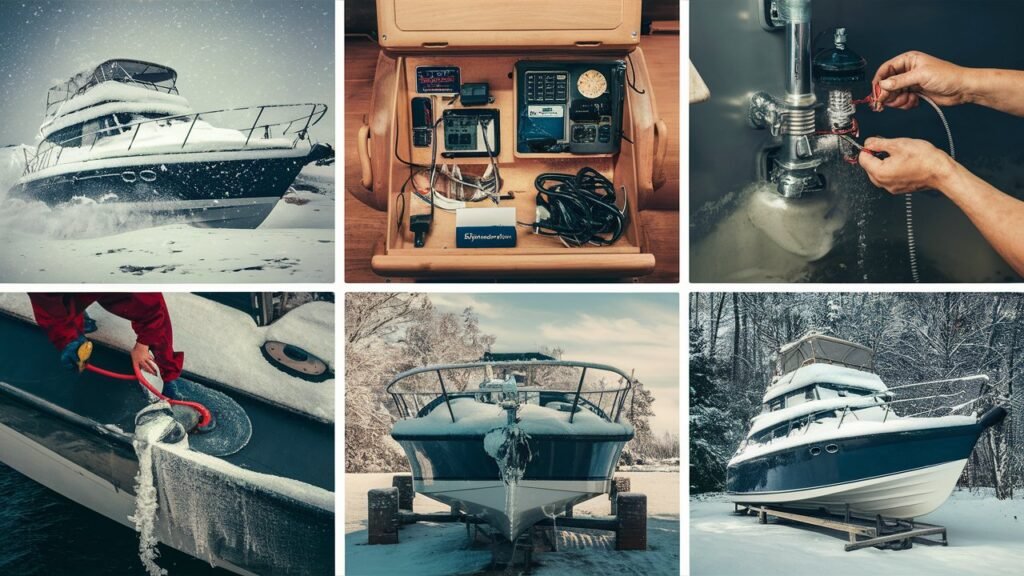
When is the Best Time to Winterize Your Inboard Boat?
To protect your inboard boat from winter weather, you must winterize it. The most appropriate time to handle this issue is before the temperature drops below zero degrees Celsius.
Normally, people do it at the end of autumn (around October or November) but this can vary depending on where you live. Failing to do so may cause harm to the engine among other parts if there is a freeze.
So doing it earlier ensures all these things are safe guarded against coldness that may come with winter season and its accompanying climate changes as well.
This will help extend the life of your boat and reduce the risk of costly repairs in the spring. It is recommended to consult the manufacturer’s guidelines or seek professional help
to properly winterize your inboard boat.
Can I Winterize My Inboard Boat On My Own?
It is possible to winterize an inboard boat by yourself, but you need to give it your full attention and be aware of what you are doing.
One of the primary things that you must do when winterizing your boat is to drain the engine block and cooling system so that no water remains inside this area which could freeze up and cause damage later on.
In addition, adding fuel stabilizer into the gas tank will help keep gasoline fresh throughout these cold months when boats are not being used frequently or at all.
Additionally, you will need to remove the battery from the boat and store it in a safe place where it will not freeze.
Finally, it is important to properly cover and store the boat in a dry and protected area to prevent any damage from the harsh winter weather.
DIY vs. Professional Winterization
DIY vs. Professional Winterization
When it comes to winterizing your home, you have two options: do it yourself or hire somebody. If you choose the first option, you will need to check for drafts and insulate pipes among other tasks.
Weather stripping windows is also important in this case because it helps in keeping heat inside the house during cold seasons.
It can save some money especially when done by a person who knows what they are doing and has enough time on their hands. Hiring professionals guarantees that everything will be done right and faster too since they know how things work best.
They have knowledge plus equipments needed for detecting areas which might cause problems if not taken care of early enough thus solving them appropriately.
This choice may be expensive but worth every penny as one rests assured knowing all necessary measures were taken into consideration before winter sets in
Essential Steps for DIY Winterization
Essential Steps for DIY Winterization
When getting your house ready for winter, there are a number of is that should be done is insulating any pipes which are exposed to cold temperatures so as to prevent them from freezing and bursting;
this can cause extensive damages. Secondly, make certain to seal up all cracks or holes around windows and doors so that cold air stays out while warm air remains inside.
Furthermore it is necessary clean out gutters as well as downspouts because if not done ice dams may form lastly do not neglect servicing heating systems since they will work harder during colder months.
important steps that need to be taken in order to correctly winterize everything. Among the first thing
conclusion
All in all, putting your inboard vessel into hibernation is an important precaution to keep it safe from the hostile elements of winter.
There are a number of things that need to be done right when preparing one’s boat for winter; such as draining the engine block and manifolds, adding antifreeze into the cooling system, using fogging oil protect against corrosion on engines and also stabilizing fuel systems then adequately covering or storing them.
Though it may seem complicated at times especially if you are new in this field but with enough knowledge coupled by attention to details anyone can do self-service.
However some boat owners might opt for professional help so that they get assured everything is done rightly and faster too.
In conclusion, following these few steps will not only save money but also protect ones’ investment by ensuring that their boats remain shipshape all through winter until next spring comes back again when temperatures rise above freezing point.
Whether one decides to take up the task themselves or seek assistance from professionals it doesn’t matter much because failure to do proper winterization may lead shorter life span alongside poor performance while on water.
